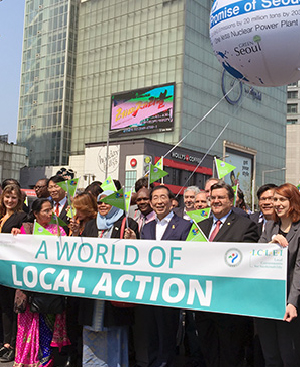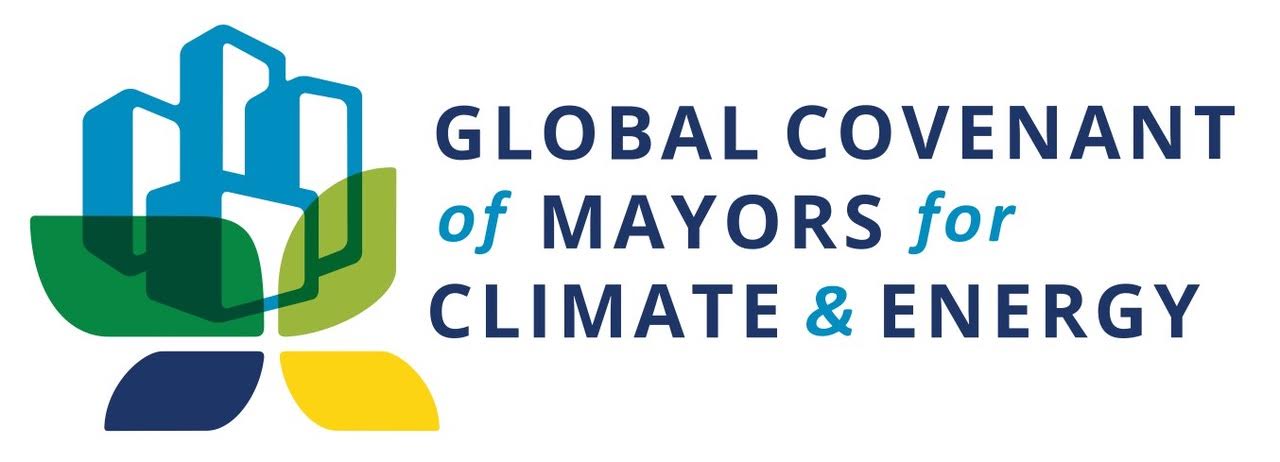- Home
- Reporting entities
- Metropolitan City of Florence
Metropolitan City of Florence
Italy Mayor: Dario Nardella-
Population 383083

-
Area 102.0km 2
-
GDP N/AN/A
-
Targets by N/A N/Aemission
Targets by Metropolitan City of Florence
There are no targets yet
- Start year: 2004
- Type: Policy/Strategies/Action Plans
- Status: In operation
The transport sector has the largest impact, with 0.88 Mt/year of CO2 emitted, 34.5% of the total. What is required is a substantial, integrated action which makes it possible – even in a difficult situation such as that of urban Florence, congested as it is by commuter and tourist flows – to achieve a significant reduction in the environmental impact of mobility in the context of the city.
In the light of the complexity of the sector and the major impact that transport has on both air quality and citizens’ quality of life, the plan envisages a well-defined series of actions that involve both the framework program and the creation of important infrastructure for the city.
On the basis of the policies and recommendations of the Structural Plan, priority interventions have been identified, such as access to zones of the city (e.g. pedestrianisation, limited traffic zones, eco-road pricing policies), the planning of parking areas and charging systems (Parking Plan with the creation of park-and-ride car parks) in addition to directly and indirectly promoting the technological modernization of vehicles in circulation.
Connected with this overall action is the creation of an ever wider network of cycle paths/lanes and the possibility of setting up a bike sharing service that can integrate with available public transport and that is aimed not only at residents but also the millions of tourists that visit the city every year.
A significant contribution to improving the availability of public transport is represented by the construction of tram lines (line 1, already completed, lines 2 and 3 and extensions) with the capacity of attracting substantial mobility flows bound for the city centre; this intervention requires several support measures, including creating park-and-ride car parks, optimizing the strategy of integrated transport, and improving information accessibility (Wi-Fi and Web 2.0 on board).
City traffic, which will be partly eased by the abovementioned actions, will be subject to traffic-flow-easing measures through the creation of a modern traffic management centre capable of providing real-time information regarding critical traffic situations and alternatives, linked to the existing information portal accessible to the public (the web-based TO-GO portal and updatable message panels).
Both the municipal vehicle fleet and public transport will undergo technological modernization and it will be possible to trial the use of electric vehicles for private mobility which, especially in certain central zones, will be able to help reduce the impact of emissions in terms of greenhouse gases (they will be powered by recharging stations supplying certified green energy) and the noise aspect.
- Transport
- Start year: 2011
- Type: Regulatory
- Status: In operation
With the adoption of the Structural Plan, the City has set in motion a process of urban redevelopment over the entire municipal area which centers around the principle of zero additional building volume; over the next few years, in fact, new construction will only be possible if replacing equivalent building volumes that are deemed not to comply with current standards or the characteristics of the local area.
In addition, the Structural Plan provides for a substantial redevelopment of the existing building stock, also significantly improving its energy and environmental performance.
An additional support action will involve heating systems, which will be required to meet increased minimum standards, gradually achieving total energy efficiency for the sector by 2020.
- Buildings
- Start year: 2005
- Type: Policy/Strategies/Action Plans
- Status: In operation
PUBLIC PROPERTIES AND SERVICES
The public sector, despite accounting for a small percentage of the overall municipal energy balance, nonetheless has the duty of implementing all possible energy efficiency measures in order to reduce consumption and costs.
By implementing a series of integrated actions, the City will be able to achieve European-level best practices and act as a leading example for the city’s residents.
Specifically, measures for redeveloping schools, public offices, sports facilities and cultural buildings have been set out. These interventions will consist mainly of converting heating systems to natural gas and optimizing their efficiency in addition to the widespread use of renewable energy sources (solar thermal, photovoltaic, micro-wind), where urban planning restrictions allow.
Public Residential Construction, which has already embarked on a path of excellence with the building of innovative projects on a national scale, may provide substantial support for energy-saving policies, while at the same time improving the quality of service offered to users.
The health sector, which has a significant presence in the municipal area with several centres of medical excellence, is undergoing a period of structural modernization that has involved and will involve the aspect of energy production in all of its forms (cogeneration, solar thermal, photovoltaic, energy saving) by reducing energy requirements and increasing energy supply security.
All of the lighting equipment managed by the Municipality (public street lighting, traffic lights, votive lamps) will also undergo significant modernization in order to help reduce municipal electricity consumption, while tree planting in the city streets will be used to limit temperature variations.
Even the most Florentine of features, the River Arno, an inescapable feature of the municipal landscape, will contribute to the Action Plan, thanks to 5 micro-hydro plants planned to be put in place at the existing dikes.
Pending being able to establish the possibility of applying energy accounting procedures to the efforts made by the local administration, in cooperation with neighboring municipalities, in the waste sector (which have not yet been included as they are of supra-municipal interest), the energy/environmental policy lines effectively concern all of the municipal administration’s activities, multiplying the results of the specific actions described, thanks to green public procurement, which institutionalizes attention to environmental externalities in procurement and purchasing procedures, which until now have been down to individual sensitivity.
- Start year: 2008
- Type: Education/Awareness Raising
- Status: In operation
To achieve the predefined objectives of the Plan, it is extremely critical, in practical terms, to be an active part of the Plan itself, to foster the active involvement of every level of local stakeholder and the population at large (an essential component for achieving reductions in CO2 emissions) and to stimulate research and raise the awareness of participating enterprises and other units in the territory so that they can cooperate harmoniously to achieve this fundamental goal for the city.
From the perspective of active implementation, which describes how the current administration adopts all of its Plans (beginning with the Structural Plan, which used the Town Meeting instrument to ensure maximum transparency and active citizen participation), the communication plan was created on the basis of two primary tools:
non-stop institutional communication: a dedicated space was opened on the public municipal network (located under Administration - Plans and projects) where all information and updates can be accessed at any time (the SEAP page) direct participation: via scheduled meetings aimed at specific actors and opened to the entire population.
The reduction of CO2 emissions needs to be a common, shared goal that extends across the entire territory and involves every sector - this is the assumption underlying the communications plan, which is pervaded by the notion that the process must take place before, during and after the SEAP itself is approved.
Participation is an indispensable condition for the city's sustainable development, which means that sufficient communication of the SEAP objectives is as fundamental as the sharing of the city's future with other institutions, local actors and the citizens. The Administration, therefore, has opened a dialog with different subjects in the worlds of business, scientific research, labor unions, associations, representatives of production categories and the world of associationism more generally in order to cultivate these themes with a variety of different means and methods.
The basic structure of communication and involvement, as a result, has been organized into three main phases:
pre: presentation of the draft Action Plan for Sustainable Energy and opening of a discussion designed to gather suggestions and proposals for initiating collaboration improving on operational aspects of existing collaborations
post: presentation of the Sustainable Energy Action Plan, as approved by the City Executive and the City Council
on-going: periodical meetings for updates in correspondence with monitoring sessions
Phase 1: presentation of the SEAP (Sustainable Energy Action Plan)
Phase 1 is the only part of the prepared plan that has been implemented so far.
In the interest of recruiting the largest number of interested subjects, public and sector-based meetings have been scheduled in correspondence with internationally-known and sector-based fairs that take place in the territory (Terrafutura, for instance).
These were promising opportunities to lay a foundation for future (and immediate, in some cases) collaborations (such as the commitment to expand 09/07/2008 Accord between the City of Florence and Confindustria Firenze on Renewable Energy Sources and their development in the territory of Florence). This mostly involved the launching of a process that the Administration could call "assessment&development" in this phase, but that over the short term (and for the first biennial monitoring) could become operational through its transformation into an action form.
The Area Coordination for Urban Development and the Working Group appreciate the importance of having many municipal participants involved, which is why their communication of the initiative includes support and promotional efforts targeted at Tuscan entities that are studying the opportunity and pledging to sign the Covenant of Mayors.
The Communication Plan, therefore, forms an integral part of the Sustainable Energy Action Plan, which accompanies every moment of its formation and every single phase that cyclically reproposes and reexamines ongoing results and updated forecasts that serve to recalibrate, when necessary, the planned actions.
- Other Emissions
The Metropolitan City of Florence has reported 1 Community emission inventory, since 2005. In its latest inventory, compiled in 2005, the Stationary energy and Transport are identified as key emission sources.
The Metropolitan City of Florence has reported 1 government operational inventory, since 2005. In its latest inventory, compiled in 2005, the Transport is identified as key emission source.
Mayor Dario NardellaMetropolitan City of Florence, Italy



